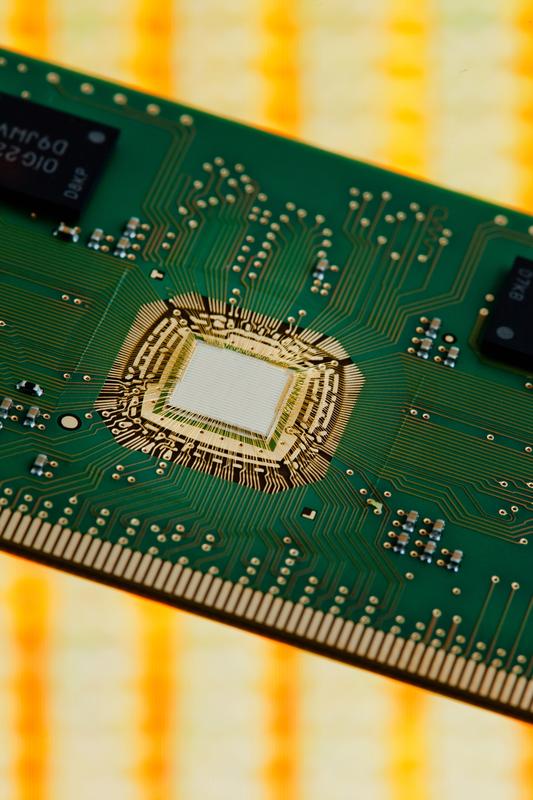cfaed presents the new microchip "Tomahawk 2"

Photo: Jürgen Lösel
The new Tomahawk is extremely fast, energy-efficient and resilient. It is a heterogeneous multi-processor which can easily integrate very different kinds of devices.
The researchers of the Cluster of Excellence for microelectronics of Technische Universität Dresden use the new prototype to prepare the so-called ‘tactile internet’.
With this, very big data volumes shall be transmitted with high end-to-end latency and allow completely new applications, e.g. vehicles that are able to react automatically to any obstacles on the road.
Driving bumper to bumper would be possible as sensors would regulate the distance between. Other innovations might be used for example in the areas of telemedicine and E-Learning, in Google glass and smartphone applications.
“This is the next step of the digital revolution“, the Cluster coordinator Prof. Gerhard Fettweis says. He expects the realization to begin in 2020. However, powerful mobile networks are necessary to support the applications in the every-day use.
To realize the 5th generation of mobile communication, Technische Universität Dresden will collaborate with the London’s Kings College and the University of Surrey.
In February, the “Tomahawk2” was presented for the first time at the International Solid-State Circuits Conference (ISSCC) in San Francisco. The first presentation of the new TUD microchip in Germany will be at the upcoming the “Design, Automation & Test in Europe Conference” (DATE’14) Conference in Dresden next week.
Further enquiries:
Birgit Holthaus
cfaed Press officer
Phone+49 351 463-42848
birgit.holthaus@tu-dresden.de
Media Contact
All latest news from the category: Event News
Newest articles

Zap Energy achieves 37-million-degree temperatures in a compact device
New publication reports record electron temperatures for a small-scale, sheared-flow-stabilized Z-pinch fusion device. In the nine decades since humans first produced fusion reactions, only a few fusion technologies have demonstrated…

Innovative microscopy demystifies metabolism of Alzheimer’s
Researchers at UC San Diego have deployed state-of-the art imaging techniques to discover the metabolism driving Alzheimer’s disease; results suggest new treatment strategies. Alzheimer’s disease causes significant problems with memory,…

A cause of immunodeficiency identified
After stroke and heart attack: Every year, between 250,000 and 300,000 people in Germany suffer from a stroke or heart attack. These patients suffer immune disturbances and are very frequently…





















